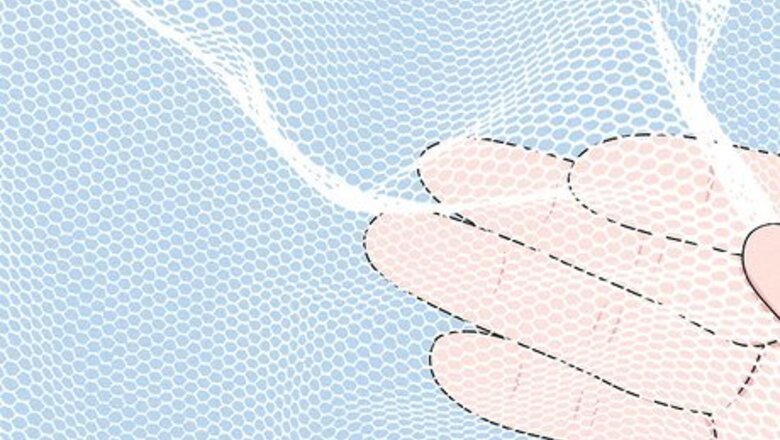
views
Measuring & Cutting the Tulle
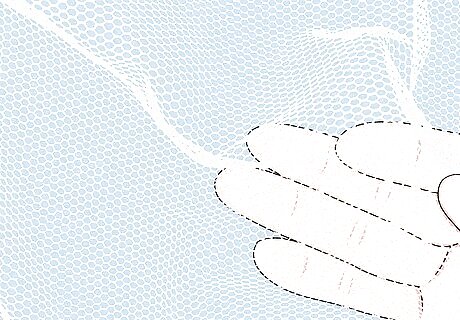
Aquire 10 ft (3.0 m) of tulle based on your wedding’s color scheme. For a standard veil, use a length of tulle that’s roughly 10 feet (3.0 m) long and 108 inches (270 cm) wide. For a smaller veil, use fabric that’s about 72 in (180 cm) wide. Purchase at least 10 feet (3.0 m) of tulle to give yourself plenty to work with. Cathedral veil lengths: While you are free to make your veil whatever length you’d like, cathedral veils are typically 108–120 inches (270–300 cm) in length. This way, they’ll be at least 5 inches (13 cm) longer than the train of your dress. Choose quality material. As bridal tailor Margo West puts it, “A better choice in fabric will yield a better veil.”
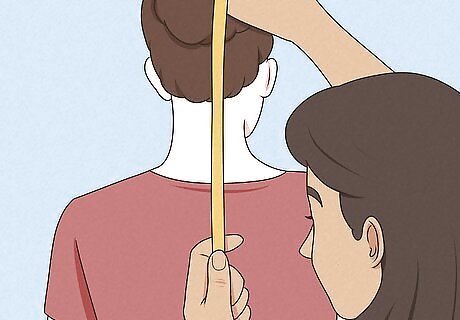
Measure 108–120 inches (270–300 cm) down from your head. Then, add or subtract additional inches based on how far you want the veil to drag behind you. Write down the measurement. Ask a friend to use a cloth measuring tape to measure the distance from the crown of your head to the floor if you need help. Remember, 108–120 inches (270–300 cm) in length is just a guideline. If you end up a little short or long, that’s totally okay. Do not forget that a cathedral veil is meant to drag on the floor behind you. It’s supposed to be a little too long and dramatic.

Lay the tulle out along the floor and fold it vertically. Find the cleanest length of floor you can find in your home and set the veil out (or, if you have a huge table, use that). Fold it vertically on top of itself. If you’re using the floor to lay your veil out, vacuum the floor or carpet underneath before you start. This is especially important if you’re working with white fabric.

Fold it in half horizontally and smooth wrinkles out. Take the right edge and gently align it with the left edge. Smooth out any seams, wrinkles, or clumps in the fabric. Folding the veil both vertically and horizontally before cutting the fabric will ensure all of your cuts are symmetrical.
Use pins to mark the curves you’re going to cut. With your fabric folded both vertically and horizontally, all 4 corners of the rectangular fabric are overlapping so you can cut them together. Mark the angle of your cut by pinning the fabric together with sewing pins. Continue adding pins freehand until you’ve established an arc you’re happy with. The sharper the angle of the pins, the more “intense” your veil will look. A softer, smoother half-circle will appear more conventional. If you feel lost, take the width of your veil while it’s folded in half. Then, measure that distance from the bottom of the length and put a pin there. That’s the end of your curve.
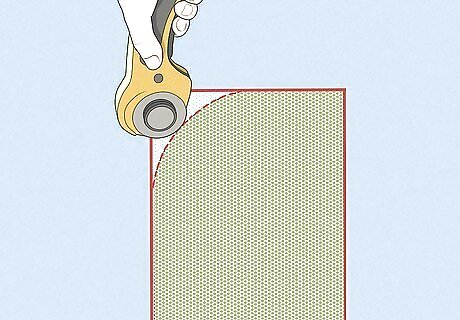
Cut the excess fabric on the edges off with a rotary cutter. Set a cutting board under the area you pinned. Use a fabric rotary cutter to trim the 4 layers of tulle off. Cut just around the outside of your pins and take your time. It is 100% okay if it’s not completely perfect. The bottom will pile and drag on the floor, and the top will be scrunched up with the comb, so nobody will see major imperfections. Professional tailor and bridal alternation expert Margo West explains, “Do not cut tulle with hand scissors. Use a rotary cutter and a steady hand, this will eliminate the chance of the edges appearing choppy.”
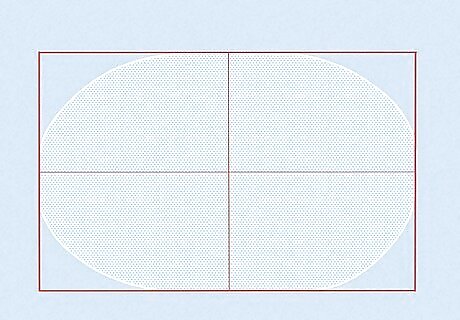
Unfold your tulle veil and lay it out to check for imperfections. Inspect all of the curved corners for stray fabrics and flyaways. Clip them off with fabric scissors. Want a thicker veil? Some brides find a single layer of tulle to be too thin for the look they’re going for. If you want a layered veil with a thicker look, repeat this entire process. After you finish assembling the veil on the comb, sew the second layer of fabric underneath the first layer near the comb.
Assembling the Veil
Wrap scrap tulle around the teeth of a long-tooth hair pin. Cut a 12 by 2 in (30.5 by 5.1 cm) scrap of fabric out of the corners you cut. Twist that fabric up and wrap it tightly around the gap of each tooth in the hair pin comb. Work your way all the way through each tooth so the entire top of the comb is covered in fabric. Use a comb-style hair pin with 8-10 teeth. The smaller U-shaped hair pins aren’t ideal for this project.
Place a stitch through the fabric at the top of the comb. Use a sewing needle and thread to run a simple straight stitch through the fabric. This will secure the scrap tulle to the comb and keep it from coming unraveled. If you’re committing to not sewing anything, you can use fabric glue. It’s not ideal though, since the veil may come apart after the ceremony.
Sew the top of the veil into the fabric in the comb. Take your time and go really slow. Margo West, a professional tailor, says to “push your needle into the fabric and pull it out from the top. Evenly space your stitches approximately ⁄2 in (1.3 cm) apart.” Scrunch each section of the tulle for the veil up, add a stitch, and keep working until the veil you cut is completely attached to the top of the comb. Picture your thread making large loops over and under the fabric you wrapped around the needles of your comb. This doesn’t have to be pretty. Nobody is going to be able to see the stitch on the very top of your comb—your hair and the fabric are going to disguise any major imperfections. Tuck any loose or stray threads around a tooth in the comb or snip them away with fabric scissors.
Adding Optional Details
Add thread to the edges of the tulle for a subtle, defined look. Load your sewing machine with fabric that matches the color of the tulle. Then, carefully run the edge of the tulle under the machine. Work your way all the way around the veil and clip the excess thread off to add your trim. This will give the edges of your veil a defined and easily visible outline to make your veil stick out and look more elegant. If you want a more ethereal, fluttery look, don’t add any trim at all. The veil will blend in and out of your dress—absolutely dreamy!
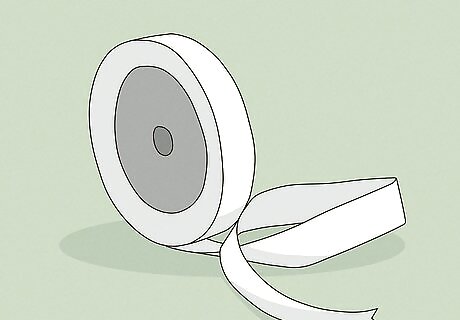
Edge your veil with satin ribbon for a royal vibe. Grab a roll of satin ribbon fabric and measure out a length equivalent to the edge of your veil. Then, fold the ribbon around the edge of the tulle and sew it in place.
Add ribbons or bows to the comb for a more playful energy. Grab some velvet or satin ribbon and incorporate it into the comb and the tie it off into a bow. You can even incorporate 2-3 different colored ribbons if you want a more expressive look and it suits the color scheme of your wedding! The world is your oyster, so add whatever fabrics or designs you’d like. You could also add sequins, flower appliques, patches, or additional sheets of colored fabric depending on what kind of look you’re going for.
















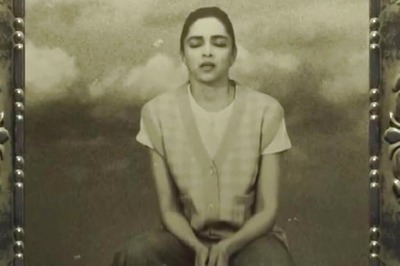
Comments
0 comment